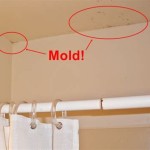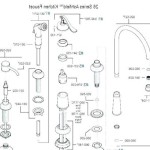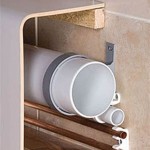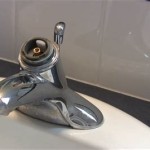How To Clean Bathroom Tiles And Grout
Maintaining a clean bathroom is crucial for hygiene and overall home aesthetics. One of the most challenging aspects of bathroom cleaning is addressing the grime, mildew, and stains that accumulate on tiles and, especially, within the grout lines. Effective cleaning not only enhances the appearance of the bathroom but also prevents the growth of mold and bacteria, contributing to a healthier environment. This article provides a comprehensive guide on how to effectively clean bathroom tiles and grout, outlining various methods and techniques to restore them to their original condition.
The accumulation of dirt, soap scum, and mineral deposits on bathroom tiles and grout creates an ideal breeding ground for mildew and mold. These microorganisms thrive in the warm and humid environment common in bathrooms. Neglecting regular cleaning can lead to stubborn stains, discoloration, and, in severe cases, structural damage to the grout and tiles. Furthermore, the presence of mold poses health risks, particularly for individuals with allergies or respiratory conditions. Therefore, consistent and thorough cleaning is essential for maintaining a healthy and visually appealing bathroom.
Before embarking on any cleaning process, it is essential to gather the necessary supplies and assess the condition of the tiles and grout. This initial assessment will help determine the most appropriate cleaning method and the intensity of the cleaning required. Consideration should also be given to the type of tile being cleaned, as certain cleaning agents may be abrasive and could damage delicate surfaces. Preparing the area adequately ensures a safe and efficient cleaning process.
Preparation and Safety Measures
Prior to initiating the cleaning process, gathering the required tools and supplies is paramount. This will streamline the cleaning process and minimize interruptions. Essential items include: a stiff-bristled brush (specifically designed for grout), a sponge, spray bottles, cleaning solutions (both commercial and homemade options), rubber gloves, eye protection, and ventilation equipment if using strong chemicals. The type of cleaning solution selected should depend on the severity of the staining and the sensitivity of the tile material.
Protecting oneself from potential irritants and chemicals is essential. Rubber gloves provide a barrier against cleaning solutions and prevent skin irritation. Eye protection, such as safety goggles, safeguards against splashes and fumes. Adequate ventilation is crucial, especially when using strong cleaning agents, to prevent the inhalation of harmful vapors. Opening windows and using exhaust fans will ensure proper airflow.
Before applying any cleaning solution to the entire surface, it is advisable to test it on an inconspicuous area. This test will determine if the solution causes any discoloration or damage to the tiles or grout. Allow the solution to sit on the test area for a few minutes, then rinse it with water and observe any changes. If no adverse effects are observed, the solution can be safely applied to the rest of the surface.
Clear the bathroom of any loose items, such as toiletries, rugs, and shower curtains, to provide unobstructed access to the tiles and grout. Sweep or vacuum the floor to remove any loose debris, dirt, or hair. This will prevent the debris from being spread around during the cleaning process and ensure that the cleaning solution can effectively penetrate the grout lines and tile surface.
Cleaning Methods and Solutions
Numerous cleaning methods and solutions are available for cleaning bathroom tiles and grout, ranging from commercially available products to homemade remedies. The choice of method depends on the severity of the stains, the type of tile and grout, and personal preferences regarding chemical use.
Commercial tile and grout cleaners are formulated to effectively remove soap scum, mildew, and hard water stains. These products typically contain surfactants, solvents, and sometimes abrasives. Follow the manufacturer's instructions carefully, as improper use can damage the tile or grout. Ensure adequate ventilation and wear protective gear when using these cleaners.
A popular homemade cleaning solution involves a mixture of baking soda and vinegar. Baking soda acts as a mild abrasive, while vinegar is a natural disinfectant and deodorizer. To create the solution, mix baking soda with enough vinegar to form a paste. Apply the paste to the grout lines and allow it to sit for several minutes. Then, scrub the grout with a stiff-bristled brush and rinse with water. This method is effective for removing mild stains and mildew.
Another effective homemade solution involves using hydrogen peroxide. Hydrogen peroxide is a mild bleaching agent that can help lighten stains and kill mold. Spray hydrogen peroxide directly onto the grout lines and let it sit for about 10-15 minutes. Then, scrub the grout with a brush and rinse with water. Hydrogen peroxide is particularly effective for removing mildew stains.
For heavily stained or discolored grout, a stronger solution may be necessary. A mixture of bleach and water can be used, but caution should be exercised to avoid damaging the tile or inhaling the fumes. Mix one part bleach with three parts water. Apply the solution to the grout lines and let it sit for a few minutes. Then, scrub the grout with a brush and rinse thoroughly with water. Ensure adequate ventilation and wear protective gear when using bleach.
Steam cleaners are an effective and environmentally friendly option for cleaning tiles and grout. The high-temperature steam loosens dirt and grime, making it easier to remove. Direct the steam nozzle along the grout lines and tile surfaces, then wipe away the loosened dirt with a clean cloth. Steam cleaners are particularly useful for removing stubborn stains and killing mold and bacteria.
Application and Scrubbing Techniques
The effectiveness of any cleaning method depends on the proper application of the cleaning solution and the scrubbing technique employed. Applying the solution evenly and scrubbing thoroughly will ensure that the stains and grime are effectively removed.
Regardless of the cleaning solution used, it should be applied evenly to the grout lines and tile surfaces. For liquid solutions, a spray bottle is ideal for even distribution. For paste solutions, use a sponge or a brush to apply the paste to the grout lines. Ensure that the solution penetrates the grout lines and covers the stained areas completely.
Scrubbing the grout lines is essential for removing embedded dirt and grime. Use a stiff-bristled brush specifically designed for grout cleaning. Apply firm pressure and scrub back and forth along the grout lines. For heavily stained areas, more vigorous scrubbing may be necessary. Be careful not to scrub too hard, as this can damage the grout or the tile surface.
For vertical surfaces, such as shower walls, start scrubbing from the top and work your way down. This will prevent the dirty water from running down onto already cleaned areas. Rinse the brush frequently in clean water to remove accumulated dirt and grime.
After scrubbing, rinse the tiles and grout thoroughly with clean water. This will remove any remaining cleaning solution and loosened dirt. Use a sponge or a cloth to wipe down the surfaces and ensure that no residue remains. Leftover residue can attract dirt and grime, negating the cleaning efforts.
If stubborn stains persist after the initial cleaning, repeat the process. Apply the cleaning solution again, let it sit for a longer period, and scrub more vigorously. In some cases, multiple applications may be necessary to completely remove the stains.
Post-Cleaning Procedures and Maintenance
After thoroughly cleaning the tiles and grout, certain post-cleaning procedures and maintenance practices can help maintain the cleanliness and prevent future staining.
After rinsing and wiping down the surfaces, dry the tiles and grout thoroughly. This will prevent water spots and the growth of mold. Use a clean towel or a squeegee to remove excess water. Ensure that the grout lines are completely dry.
Applying a grout sealer can help protect the grout from future staining and water damage. Grout sealers penetrate the grout and create a barrier that prevents dirt and moisture from seeping in. Apply the sealer according to the manufacturer's instructions, ensuring that the grout lines are completely dry beforehand. Reapply the sealer periodically to maintain its effectiveness.
Regular cleaning is essential for maintaining clean tiles and grout. Wipe down the tiles after each shower to remove soap scum and water spots. Use a mild cleaning solution and a sponge or cloth for regular cleaning.
Proper ventilation is crucial for preventing the growth of mold and mildew. Ensure that the bathroom is adequately ventilated by opening windows or using an exhaust fan after each shower. This will help reduce humidity and prevent the formation of mildew.
Addressing spills and stains promptly is essential for preventing them from setting in. Wipe up spills as soon as they occur to prevent them from penetrating the grout. Use a mild cleaning solution to remove any residue.

How To Clean Grout In Your Shower Alpine Carpet Cleaning

How To Clean Bathroom Tile And Grout Reviews By Wirecutter

How To Clean Mold In Shower Grout Tips And Tricks Certified Care

How To Clean Grout In Shower Simple S Keep Your Bathroom Tiles Gleaming Express Co

How To Clean Bathroom Tile Grout Home Remedies Banish Mould Express Co

The Ultimate Guide To Cleaning Grout 10 Diy Tile Cleaners Tested Bren Did

How To Clean Bathroom Tile And Grout Reviews By Wirecutter

How To Clean Grout Tile Cleaning Tips Simply Spotless

How To Clean Grout With A Homemade Cleaner

How To Clean Refresh And Seal Your Grout Easily Ly
Related Posts







